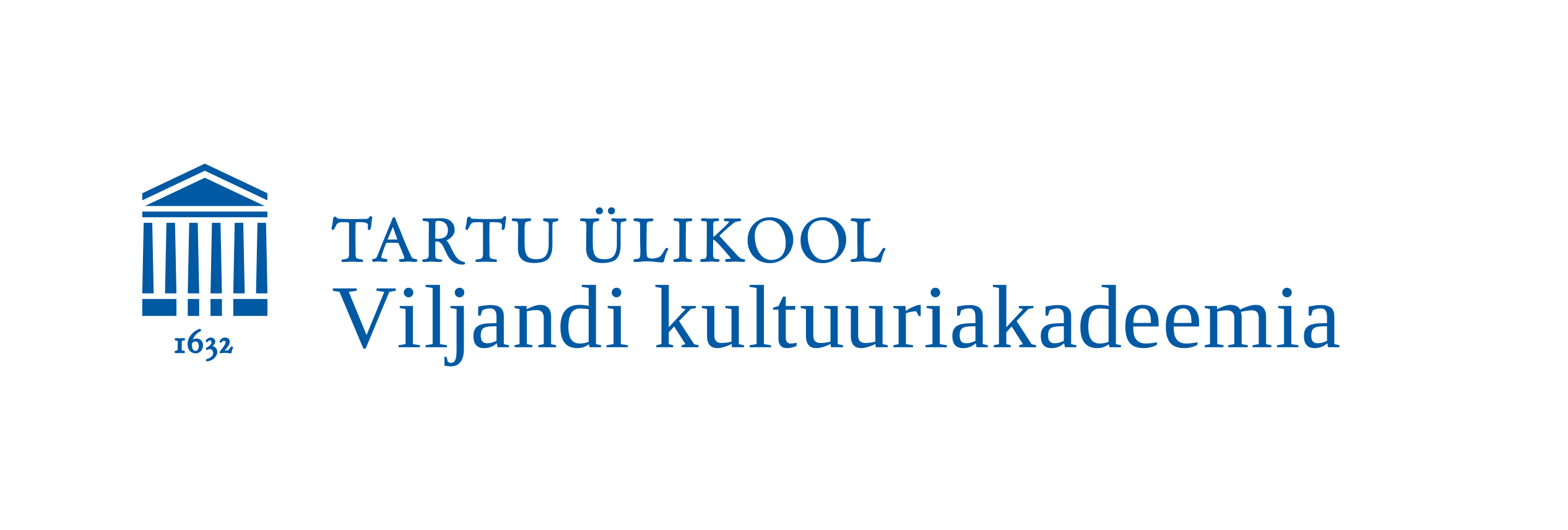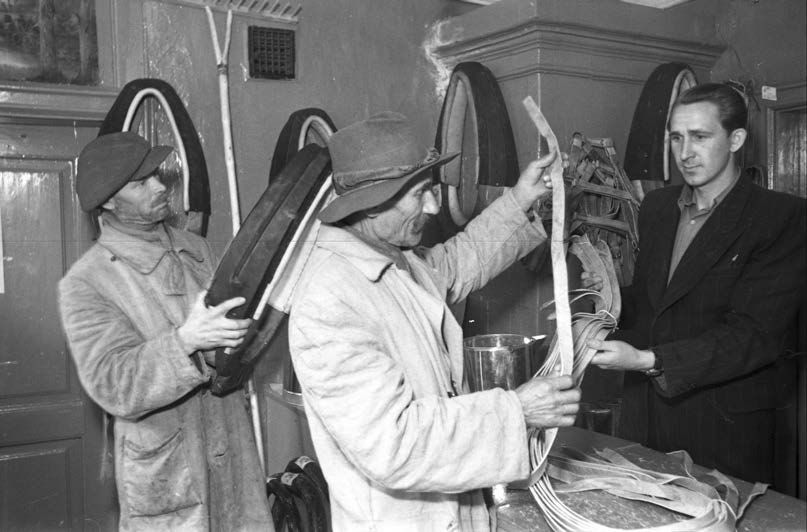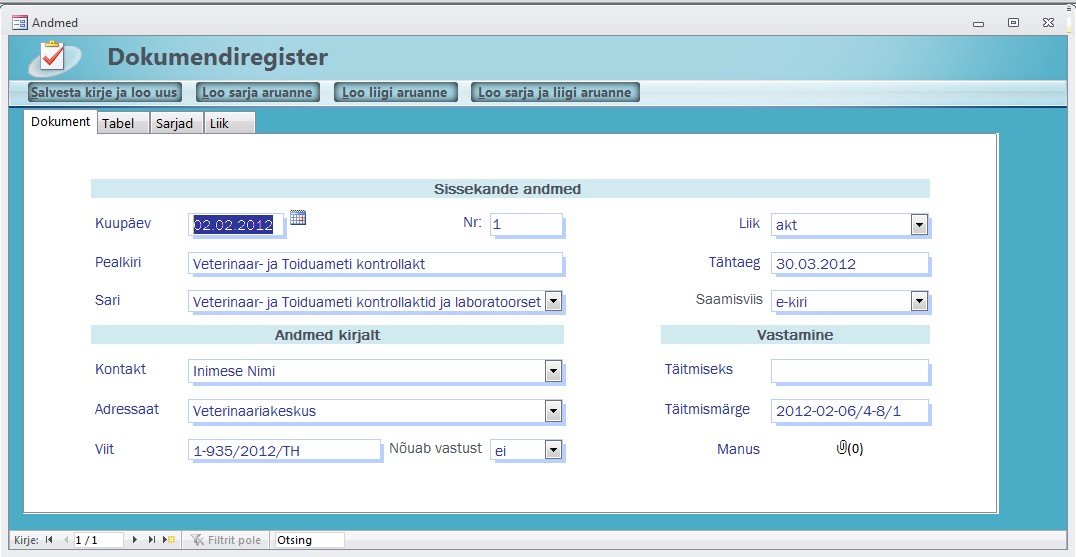“INSTITUTSIOONI AJALUGU: LÕUNA-EESTI PÄÄSTEKESKUS 2006-2010” (juhendaja Katrin Roosileht, MA).
LÜHIÜLEVAADE: Tihti küll seda ei juhtu, kuid mõnikord siiski on ajaloost kirjutatud töö kasutatav ettenähtavas tulevikus asjade paremaks korraldamiseks. Kaire Kiviväli töö „Institutsiooni ajalugu. Lõuna-Eesti Päästekeskus 2006-2010“ kirjeldab päästeteenistuste struktuurseid muutusi ning võrdlevalt neis tekkinud dokumentatsiooni.
Teadagi on Eestis sisejulgeoleku korraldamine olnud pärast 2007. aasta aprillisündmusi prioriteet, samuti on Schengeni viisaruumiga liitumine tekitanud uue olukorra Eestis kui Euroopa Liidu piiririigis. Nii politsei, piirivalve kui kodakondsus- ja migratsiooni valdkond on struktuurselt ümber korraldatud ning ümberkorraldused jätkuvad. Kõik see toob kaasa suuri muutusi info- ja dokumendihalduse korralduses. Liites organisatsioone, ühendatakse nende dokumentatsioon, korrastatakse arhiivid. Just selles etapis on ülevaade institutsiooni ajaloost hädavajalik abivahend, mis aitab määrata arhiivimoodustajad, korrastada ühte moodi arhiivid ning planeerida struktuurimuutusejärgne dokumendihaldus.
Päästevaldkonnas on struktuurne reform käimas ning info- ja dokumendihalduse ümberkorraldamine samuti, nagu ka arhiivide korrastamine. Kaire Kiviväli töö annab ülevaate nii struktuuride kui funktsioonide muutmisest ning sellest, kas ja kuidas on tegevust dokumenteeritud. Selline dokumendihaldusele eriomane vaade, milles dokumentatsiooni kaudu peegeldub asutuse tegevus, on väga heaks sisendiks ülesannete täitmise ulatuse ja kvaliteedi hindamisel. Mõistagi on päästevaldkonna töö mitte töö dokumentidega, vaid ikka päästmine. Ometi on asjaajamise korraldamise kvaliteet organisatsiooni üldise kultuuri näitajaks.
Organisatsiooni käitumise loogika on alati suunatud laienemisele, kuid samas kõneldakse palju päästjate arvu vähesusest ehk päästevõimekuse langusest. Kiviväli töö näitab ka, et tugifunktsioonide nagu asjaajamine, personalitöö ja raamatupidamine efektiivistamine on olnud märksa suurem kui tegelike päästjate arvu vähendamine. Pidevas õiguslikus – Päästeseadust on 1994 kuni 2010 muudetud 21 korda – ning struktuurses muutuses näitab dokumenteeritud info vahest kõige paremini tegevuse muutust ajas efektiivsemaks, laiemaks jne.
Kui Päästeamet 2012. aastal oma info- ja dokumendihalduse ümber korraldab, siis on Kaire Kivivälja töö kasutatav nii dokumendi- kui arhiivihalduse analüüsil.
Veiko Berendsen
Dokumendihalduse lektor
TÜ Viljandi Kultuuriakadeemia
LÄBITUD ÕPPEKAVA: Info- ja dokumendihalduse õppekava.
SUMMARY: Institution’s history: South-Estonian Rescue Center in 2006-2010
Organizing the archives, it is important to fix the duties and the structure of the concerned institution. Fixing helps further researchers to identify, what kind of information can be found from the archive. That kind of research area has grown to be a new scientific field, named institutional history.
The following research handles South-Estonian Rescue Center’s, as institution’s, history during 2006-2010. Goal of the research is to describe the structure and duties of the South-Estonian Rescue Center and represent, how they have been changed in time. Another goal is to show the impact of the changes to the institution’s management and emerging documentation.
South-Estonian Rescue Center was established in 2006, and it’s history has not been explored before. Research is written in describing style, using different strategys as inquiry of sources methods, and sourche critique methods, which are typical to historical research.
Research is divided into several thematical chapters. In the first chapter, author gives a short overview of the developments in Estonian rescue field in general. A specific review is given of the developments of the fire-brigades and rescue institutions working in South-Estonia after the reemancipation period. Most important rearrangements in legislation and in Rescue Centers took place in 1992-2005. During the first years after the reemancipation period in Estonia, there were existing state’s and local government’s fire-brigades and rescue institutions, private enterprises’ fire brigades and rescue divisions, as well field’s organisations and associations. Counties’ rescue institutions were independent until 2006, when central and united systems were established.
Second chapter concentrates on South-Estonian Rescue Center’s structure. Author describes, what kind of departments and offices formed the South-Estonian Rescue Center, and how the 109 personnel changed numerically in time. South-Estonian Rescue Center’s structure units were bureaus and departments. During the establishment of the istitution in 2006, the structure units consisted of 12 bureaus and 6 rescue departments. At the end of 2010, centralisation was accomplished in order to ease the work processes and increase the stability of services among the regions. South-Estonian Rescue Center’s number of officials has diminished since establishment. In 2006 there were 902 officials, since 01.05.2010 the personnel consists of 722 officials, including 684 rescueofficers.
Third chapter describes South-Estonian Rescue Center’s duties and it’s changes. Based on elaborated documents, it can be said, that the rights coordinating the rescue institutions’ work have gone through a big change. During the research author discovered that earlier legislation was divided into two legal acts – Rescue Act and Firesafety Act. Rescue Act embraces rescue institutions’ duties, giving a list of the public services, as well duties preventing and eliminating the risks. Firesafety Act enacts persons’ duties assuring firesafety.
Fourth chapter describes South-Estonian Rescue Center’s management and document administration. Drafting the management rule, all necessary documents, administration requestst stated in the laws, decrees and reglements, were taken into consideration. Rule of the management covered allt the basics of management: management and document circulation arrangement, responsibilities, documents’ format requirements and rules making documents public and assuring access to the document. Results of the research show, that management has always been changed later, after the changes in the institutions’ structure and duties have taken place.
Hopefully the research gives a fair overview of the changes taken place in South-Estonian Rescue Center in 2006-2010 and will be a part preserving institutions’ history.


